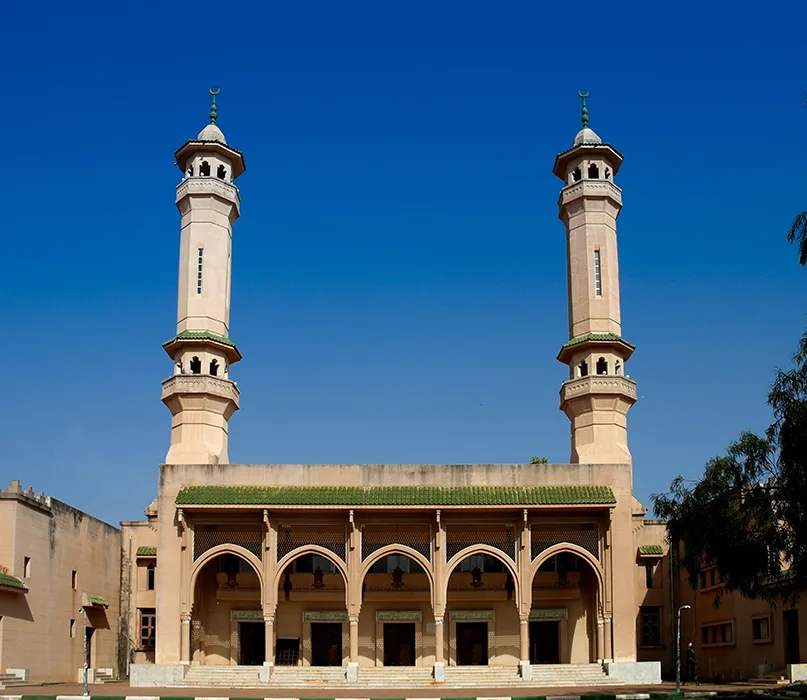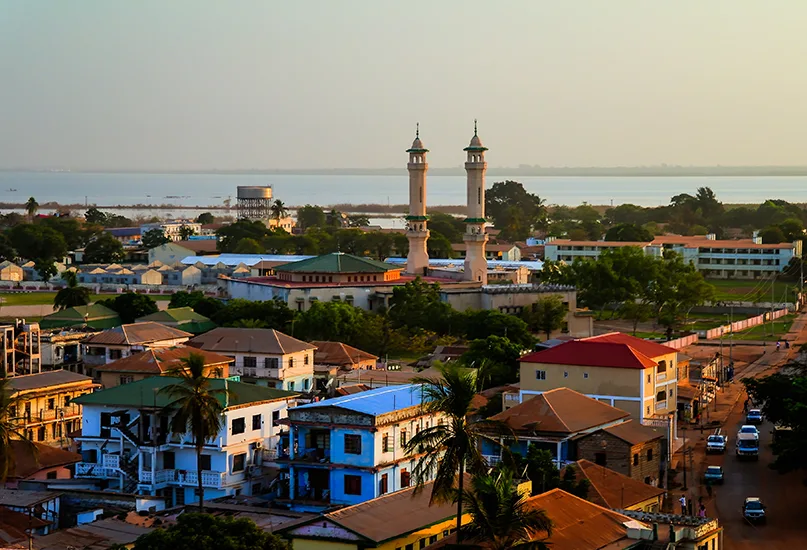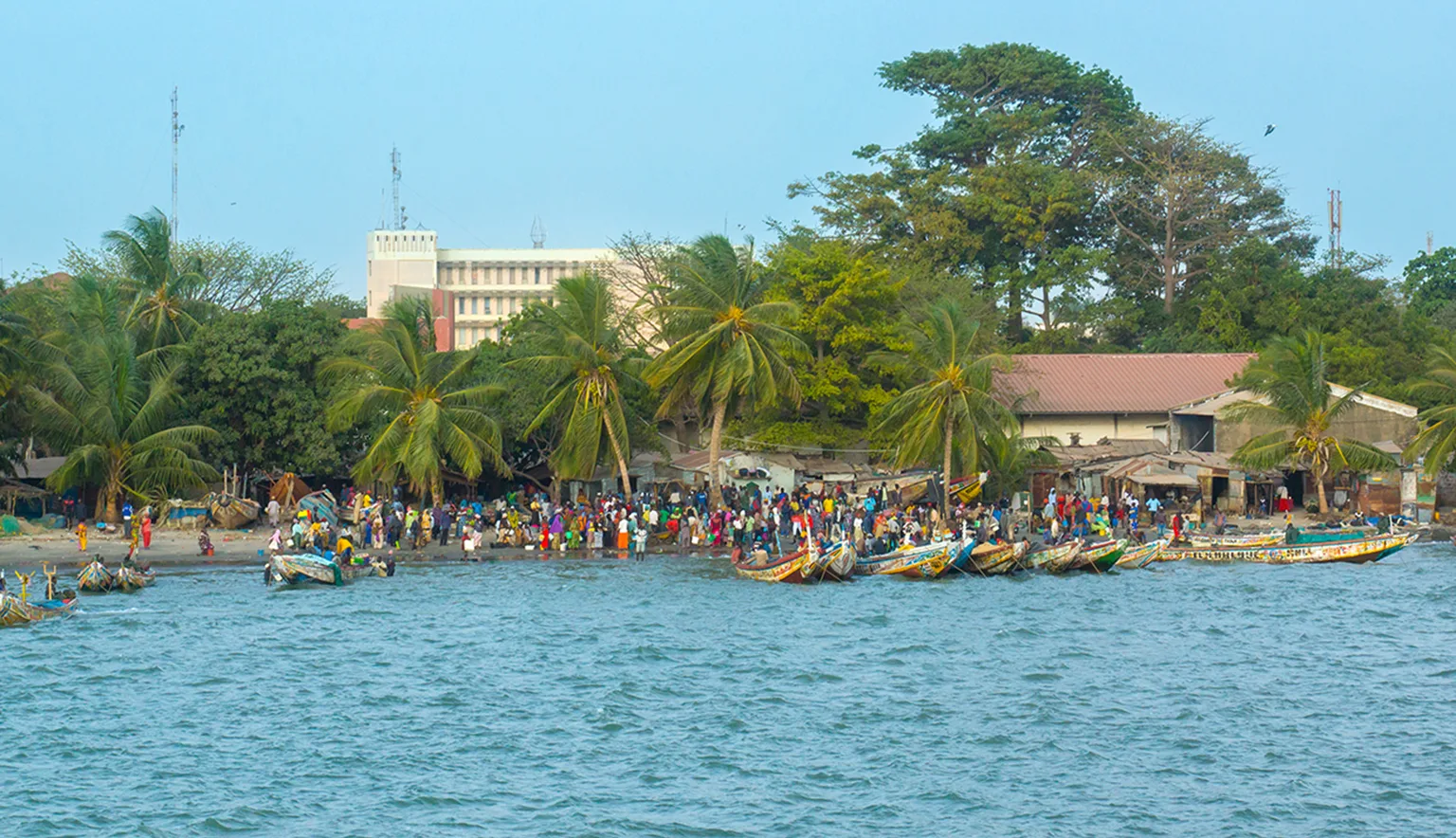Situated on Saint Mary’s Island at the mouth of the mighty Gambia River, Banjul is a unique seaport that offers a glimpse into the country’s storied past. Although one of the smallest of The Gambia’s cities, it represents a hub of culture and power.
Originally known as Bathurst during British Colonial rule, the city was renamed Banjul following The Gambia’s independence in 1965, which was chosen to better reflect the city’s African roots. Today, Banjul is home to the government’s most significant offices, residing at the heart of the nation’s political integrity.
Visitors are welcomed to the city via a towering archway, Arch 22, which tells the story of the country’s evolving past and continued future of independence. Other culturally significant monuments include the National Museum of The Gambia and the highly magisterial King Fahad Mosque, as well as the wonderfully chaotic Albert Market.

Visitors to Banjul’s old town will immediately notice the abundance of colonial buildings and Krio-style architecture that make up the culturally rich and multifaceted region. Amongst the steel roofs and sand-coloured stoney buildings are pockets of emerald palm beaches and Edenic parks. Such pops of colour and nature are mirrored by the soft sandy shores and bustling harbours at the city’s coast, which highlight its maritime importance.
As one of the least-populated cities on the African continent, Banjul should not be overlooked as it not only represents the core of The Gambia’s political strength but also offers a poignant historical reflection of this dynamic capital city.





























